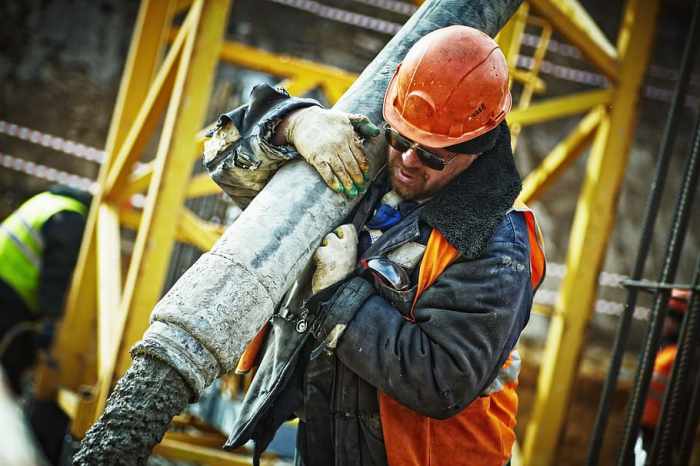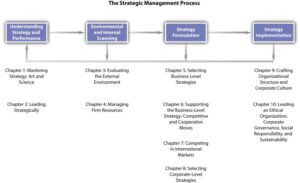
Safety signage regulations play a vital role in ensuring a secure environment across various industries. These guidelines not only promote awareness but also serve as a proactive measure to prevent accidents. Understanding these regulations is crucial for compliance and the overall safety of employees and customers alike.
From mandatory signs to informative ones, safety signage encompasses a wide range of indicators, each tailored to convey specific messages. This comprehensive overview will delve into the significance of these regulations, the types of signs required, and the implications that come with non-compliance.
Safety Signage Regulations Overview
Safety signage plays a critical role in ensuring the well-being of employees and visitors in various industries. These signs provide essential information about hazards and safety protocols, helping to prevent accidents and injuries. Understanding the regulations governing safety signage is vital for compliance and effective risk management.Regulations regarding safety signage are established by various governing bodies, including OSHA in the United States and the Health and Safety Executive in the UK.
These regulations Artikel the design, placement, and maintenance of safety signs, ensuring that they are easily visible and understandable. Non-compliance with safety signage regulations can lead to severe consequences, including fines, legal liability, and increased risk of workplace accidents.
Types of Safety Signage
There are several types of safety signs, each serving a specific purpose in conveying important safety information. Understanding these categories is crucial for ensuring compliance and enhancing workplace safety.
- Warning Signs: These signs alert individuals to potential hazards, such as slippery floors or high voltage areas. They typically use yellow backgrounds with black symbols or text.
- Mandatory Signs: These signs indicate actions that must be taken to ensure safety, such as wearing personal protective equipment. They usually have a blue background with white symbols.
- Informative Signs: These signs provide general information about safety procedures or emergency exits. They can vary in color but must be clear and concise.
Industries such as construction, manufacturing, and healthcare require various safety signage to mitigate risks and comply with regulations. For example, construction sites often prominently feature warning signs to notify workers of potential hazards like falling debris.
International Business and Safety Signage

Safety signage regulations can vary significantly across different countries, making compliance a complex issue for international businesses. Countries may have unique standards for sign design, language, and required symbols.International standards, such as those set by the International Organization for Standardization (ISO) and the American National Standards Institute (ANSI), provide guidelines that can help businesses maintain consistency in safety signage across borders.
Compliance with these standards helps facilitate safer working environments globally.Global business operations impact safety signage compliance by requiring companies to adapt their signage to conform to local regulations while still maintaining a unified brand identity. This can present challenges, especially in regions with less stringent safety laws.
Business Innovation in Safety Signage
Innovative technologies have revolutionized the design and production of safety signage. These advancements enable businesses to create more effective and engaging safety signs that capture attention and communicate important information.Businesses can adapt safety signage using digital displays, augmented reality, and interactive elements that enhance workplace safety awareness. For instance, a manufacturing company might implement digital signage to provide real-time updates on safety protocols, risks, and emergency procedures.Several case studies highlight companies that have successfully innovated their safety signage.
For example, a major automotive manufacturer redesigned its safety signs using bright LED displays that change based on real-time conditions, significantly improving employee safety awareness.
Risk Management and Safety Signage
Safety signage plays a pivotal role in risk management strategies by helping to communicate hazards and safe practices to employees. Effective signage is essential for minimizing workplace accidents and ensuring compliance with safety regulations.Assessing risks associated with inadequate safety signage involves evaluating the potential consequences of not having clear signage in place. Organizations can conduct risk assessments that consider factors such as employee safety, legal liabilities, and operational disruptions.Best practices for integrating safety signage into a risk management plan include regular audits of sign visibility and clarity, employee training on signage interpretation, and consistent updates to signage based on changing workplace conditions.
Workplace Safety and Signage
An effective workplace safety culture is closely linked to the proper use of signage. Clear and visible signage fosters awareness of hazards and promotes compliance with safety protocols.Guidelines for placing safety signs in workplaces include ensuring they are positioned at eye level, located near potential hazards, and utilizing contrasting colors for visibility. Signs should always be maintained and replaced if they become damaged or faded.Training employees on the significance of safety signage is crucial for fostering a safety-oriented culture.
Regular training sessions can help employees understand the meanings of various signs and the importance of adhering to safety protocols.
Marketing Direct and Safety Signage

Safety signage can significantly enhance a brand’s image when marketed effectively. Companies can showcase their commitment to safety and corporate responsibility by highlighting their use of high-quality signage.Strategies for promoting safety signage products to businesses include demonstrating the long-term cost savings associated with reducing workplace incidents and providing case studies that illustrate successful safety signage implementations.Marketing campaigns can feature testimonials from organizations that have experienced improved safety outcomes due to effective signage.
These campaigns can underline the importance of safety in business operations and promote a culture of safety within the community.
Business Outsourcing and Signage Production
Outsourcing safety signage production can offer numerous benefits, including cost savings and access to specialized expertise. However, it also presents challenges, such as ensuring quality control and aligning signage with company branding.Selecting the right outsourcing partner for signage needs involves evaluating their experience, reputation, and ability to meet industry standards. Clear communication of expectations and requirements is essential for a successful partnership.Quality control measures for outsourced safety signage may include inspecting materials, verifying compliance with regulations, and conducting regular audits of the production process to maintain high standards.
Business Presentation on Safety Signage
Creating a presentation on safety signage regulations requires a structured approach to effectively communicate key information. A well-designed template can help present the information in a clear and engaging manner.Key points to include in a business presentation on safety signage regulations should encompass an overview of applicable regulations, the importance of compliance, and the potential consequences of non-compliance. Practical examples can enhance understanding and retention.Utilizing visuals effectively in safety signage presentations can significantly boost engagement.
High-quality images of safety signs in various settings and infographics summarizing regulations can help convey information compellingly and memorably.
Training and Safety Signage
Training employees on the interpretation of safety signage is essential for ensuring workplace safety. Best practices for training should include interactive sessions that engage employees and enhance their understanding of safety protocols.A comprehensive training program that incorporates safety signage education might include workshops, hands-on activities, and regular assessments to ensure retention of knowledge. This approach fosters a culture of safety and accountability among employees.Regular safety signage training sessions are crucial for keeping employees informed about new signs, changes in safety protocols, and reinforcing the importance of compliance with safety measures.
Conclusion
In summary, adhering to safety signage regulations is essential for fostering a culture of safety within the workplace. Companies that invest in effective signage not only protect their employees but also enhance their brand image through a commitment to safety. As industries continue to evolve, staying informed about these regulations will ensure that businesses remain compliant and safe.
Expert Answers
What are the key components of safety signage?
Key components include clear symbols, appropriate colors, and easily readable text to convey essential information effectively.
How often should safety signage be updated?
Safety signage should be reviewed and updated regularly, especially when workplace conditions change or after an incident.
Are there universal standards for safety signage?
Yes, while various countries have their own regulations, many adhere to international standards set by organizations like ISO.
What role does employee training play in safety signage?
Training ensures that employees understand and recognize safety signage, which enhances their ability to respond appropriately in emergencies.
How can technology improve safety signage?
Innovative technologies such as digital signage and augmented reality can provide dynamic information and enhance visibility.




